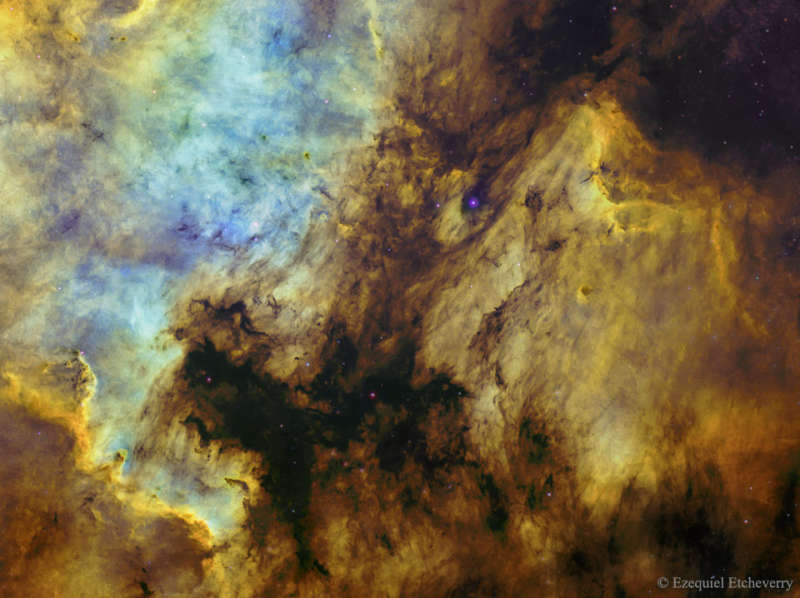
|
Credit & Copyright: Ezequiel Etcheverry
Explanation:
Here lie familiar shapes in
unfamiliar
locations.
On the left is an
emission nebula cataloged as NGC 7000,
famous partly because it resembles our fair planet's continent of
North America.
The emission region to the right of the
North America Nebula
is IC 5070, also known for its suggestive outlines
as the Pelican Nebula.
Separated by a dark cloud of
obscuring dust,
the two bright nebulae are about 1,500
light-years away.
At that distance, the 4 degree wide field of view spans
100 light-years.
This
spectacular cosmic portrait combines
narrow band images
to highlight bright
ionization fronts with fine details of
dark, dusty forms in silhouette.
Emission from atomic
hydrogen,
sulfur, and
oxygen is captured in
the narrow band image in
scientifically
assigned colors.
These nebulae can be
seen with binoculars from a
dark location.
|
January February March April May June July August September October November December |
| ||||||||||||||||||||||||||||||||||||||||||||||||
NASA Web Site Statements, Warnings, and Disclaimers
NASA Official: Jay Norris. Specific rights apply.
A service of: LHEA at NASA / GSFC
& Michigan Tech. U.
Based on Astronomy Picture
Of the Day
Publications with keywords: North America Nebula - Pelican Nebula
Publications with words: North America Nebula - Pelican Nebula
See also:
- APOD: 2025 January 22 Á The North America Nebula
- APOD: 2023 August 7 Á The Pelican Nebula in Gas, Dust, and Stars
- Stars, Dust, Pillars, and Jets in the Pelican Nebula
- North America and the Pelican
- The Pelican Nebula in Red and Blue
- The Pelican Nebula in Gas, Dust, and Stars
- The North America Nebula in Infrared
